The Tesco juggernaut keeps on trucking, with sales of £59bn and profits north of £3bn in its latest accounts. Yet Tesco is not infallible and against the backdrop of a global economic recession suppliers, industry consultants, City analysts and marketing experts have been unusually critical of certain aspects of its strategy. The Grocer team reports
1. Lower like-for-like sales
Tesco says it's deliberately traded down its customers with its new discounter line and higher levels of promotion. It's also more exposed than Morrisons and Sainsbury's, in particular, to the decline in non-food sales.
But as an explanation for the slower growth versus its big four rivals, this won't entirely wash. Its new Discounter range accounts for just 1.5% of sales, and it's not alone in bolstering promotions or encouraging its customers to switch and save: Sainsbury's and Morrisons have been quick to buck up their ideas on the value side.
And Asda is now the fastest-growing of the lot, despite non-food sales that are higher as a percentage of sales. So what's behind the slowing growth? One reason: it's a victim of its own success, says City analyst Darren Shirley at Shore Capital. "Comparisons year-on-year always get increasingly difficult, because its sales densities are that much higher."
Unusually, its rivals are also firing on all cylinders, says Clare Simpson, consultant at Dragon Rouge. "Tesco has been caught in a pincer movement. It doesn't seem to offer a real food experience and it's also not giving shoppers an experience, whether it's the themed events, ranges and promotions of Asda, or the simplicity of Aldi and Lidl. The British shopper needs value, but this can't be at the expense of engagement."
2. Higher prices
Tesco is at pains to show it's cheaper than its rivals. Yet the perception - confirmed earlier this spring by a BBC Watchdog survey - is that others are cheaper. Indeed, there's plenty of evidence to suggest shopper perception is right.
As well as consistently losing out to Asda in The Grocer 33, a recent note by brokers JP Morgan said: "Tesco's offer has become too complex and its total basket is pricey for part of Tesco's customer base."
"Tesco is kidding itself," adds the MD of a major food manufacturer. "When I give Asda a 1p discount, I see a 1p discount on shelf. When I give Tesco a 1p discount, quite often I don't see that on shelf. The way to prove you're the cheapest is to be the cheapest. But it's plainly not."
Tesco insists it's passing on savings to its customers. But in its Real Baskets ad campaign, the flaw in its argument is plain for all to see. Unlike Asda, Tesco's ads rely on its in-house data. This not only puts the burden of proof directly on the retailer, all the shoppers listed in the ad are current Tesco customers - all loyalty card holders, in fact. When Tesco's adverts show a pile of 1.1 million baskets cheaper at Tesco versus 800,000 cheaper at Asda, Tesco is telling 800,000 loyal shoppers they'd do better to shop elsewhere.
Says Hobart Capital analyst Dave McCarthy: "The campaign is unconvincing, confusing, and merely tells customers that a large proportion of them could shop cheaper at Asda. But they can't tell Asda customers it is cheaper to shop at Tesco because they do not have the data."
3. Marketing muddle
Real Baskets is not the only marketing own goal. According to some critics, Tesco handed the discounters a huge handup when it rebranded itself as Britain's Biggest Discounter. Award-winning Marketing magazine columnist Mark Ritson says: "Tesco is so worried about Aldi, it has forgotten the single-most important lesson of branding: to thine own self be true. You can't be more Aldi than Aldi."
While Tesco has also used its Every Little Helps strapline in a variety of executions to sell wine, insurance, phones, Asda has pursued a price-led strategy with a single-mindedness that borders on obsessive, says Richard McKenzie, a retail partner at OC&C . "Tesco wants to appeal to its much broader customer base, but mixed messages are almost inevitable."
4. The right range?
Sir Terry insists the creation of choice at the value end will pay dividends in the long term, and says 30% of customers are now buying the new Discounter brands. But McCarthy says the emphasis is wrong. "Where people are switching to discounters it is often because of the price of fresh food. If you have a look at all the ads Tesco has been running, it is only of late it has been advertising fresh."
The outperformance of Tesco by its rivals was also down to their focus on the leading brands, which according to Nielsen, have outperformed own label. In its note to investors, JP Morgan said Tesco upped the price of its brands (4%) more than the rest of the market (2.3%) to compensate for price cuts on its discount lines and own-label products. It also made the lowest level of own-label price increases in the own-label market, but rather than generating business as the retailer hoped, own-label volumes fell 3.7% [TNS 12w/e 21 March].
Adds Harper: "Tesco is likely to have problems encouraging suppliers to invest in its promotions. It's not growing nearly as fast as its rivals, so there's less residual benefit to suppliers from promoting with Tesco - it's just putting money in Tesco's pockets. As a result, suppliers are likely to increase their spend with rivals."
Meanwhile, Tesco's heavy recent focus on price has potentially disenfranchised some more affluent shoppers, says Shore Capital head of research Clive Black. "With more ABC1 customers than Asda, Sainsbury's and M&S together, Tesco has to strike a delicate balance, but the pendulum has probably swung too far to value."
5. Not So 'Easy' Does It in the United States?
Higher-than-expected trading losses of £142m in 2008/09 will now be followed by a similar loss in the current year as Tesco has been forced to slow the store-opening programme for Fresh & Easy Neighborhood Market. Only half the 200 stores that were set to be operational by February 2009 are currently trading. Tesco blames its problems on the scale of the downturn, particularly in the key territories of Las Vegas, Phoenix and the Inland Empire region of California.
But there have undeniably been issues with execution. Fresh & Easy boss Tim Mason recently admitted he had (wrongly) assumed Tesco's model of fresh food and own-label produce at "everyday low prices" would absolve it from slugging it out with rivals on price and discounting. Fresh & Easy has since launched a 98 cent range of produce and $1 special offers and is now offering money-off coupons to shoppers who spend more than $30 in a visit.
Additional ranges, including local brands and frozen food, have been introduced and changes to the previously sterile store ambience have been made.
6. Availability issues
Tesco ranked last for availability in 2008 with 96.50% in The Grocer 33 availability study and has since fallen to 96.35%. Difficulties here stem from its complex supply chain, with many more formats than Asda and Morrisons in particular. Experts also think recent HQ cuts have had an impact.
Claims Storecheck MD Colin Harper: "While other chains have issues at store level, Tesco's generally originate higher up the chain. It has a particularly high churn rate of staff, and in trimming the 'fat' this year may have lost expertise."
Tesco has begun to tackle availability with new PoS to signal high-demand items to staff, encouraging them to prioritise re-stocking of items before high-traffic periods like weekday early evenings.
But inconsistent availability may also be the result of range changes. In fresh produce, a senior source at one major fruit supplier claims Tesco has been struggling to source sufficient volumes for its discount Market Value range.
"Market Value volumes are difficult to fulfil in an undersupplied market," says the source. Tesco is also known to have used class one fruit in some Market Value lines, building consumer expectations for high quality at low prices while devaluing the premium end. "They will drive growers out of business. If retailers only want to pay low prices for class one, they won't get supplies."
7. One Stop
Is One Stop the black sheep of Tesco? Or a secret weapon, as the ACS claims? Since it was bought for £377.3m in 2003, the 500-store c-store chain has been run completely separately with its own fascia, its own products - you won't find a mention of Tesco in-store.
On the surface, the business is doing OK. One Stop recorded a 4.6% rise in sales to £452m in the year to 23 February 2008 and made a profit for the first time, against a loss of £4.9m in 2007, but only after a £150m loan owed to Tesco Crown Partnership was waived.
Tesco simply hasn't known what to do with the chain, suggests one industry source: "It hoped to convert all the stores to Tesco Express, but hasn't been able to."
8. Bad PR
No one likes a big bully. In the US, it's Wal-Mart. In the UK, Wal-Mart-owned Asda gets away scot free, with NGOs and publicity-seeking celeb chefs baiting Tesco instead. But while this comes with the territory - it's highly difficult to balance being consumer champion with world domination - Tesco has committed PR gaffes in the past year.
Suing The Guardian was one thing; pursuing a small-fry Thai journalist looked overbearing. And in its handling of Hugh Fearnley-Whittingstall Tesco displayed barely concealed impatience and uncharacteristic arrogance. If Tesco can't roll out the big guns, it should make more use of mid-level buyers who understand the supply chain and can put a human face on Tesco's position.
9. Disappearing talent
Sir Terry says he isn't worried about succession planning, insisting there is lots of talent at 'Level 5', below the board. "There are about 80 at this level, running a country or the dotcom, and a further 400 general managers at the level below, and succession will come from this population." But some industry insiders suggest that, with its international expansion, Tesco is spreading itself too thin.
"Is it me getting older, or are the buyers getting younger?" asks the sales director of one of Britain's biggest food and drink manufacturers. "None of the buyers are allowed to stay long enough, these days, to develop any expertise, and I get the feeling all the good people have gone off to run Kazakhstan."
10. The OFT
For now Tesco appears to have fended off the proposed 'Competition Test', after The Competition Appeals Tribunal's historic decision to throw it out in March. But the Competition Commission is determined to stop the rise of Tescotowns, and has been given six months to have another go.
...and 3 Billion other Reasons He Can Sleep Easy
1. £3bn is still £3bn. Its rivals would love to have Tesco's problems. In ghastly economic conditions, it generated a better-than-expected £3.13bn in profits, once again confounding doom-mongers who had dared to suggest the wheels might be coming off the juggernaut. At £2.4bn, the UK profits of Tesco alone are greater than the profits of Asda, Sainsbury's, Morrisons, Waitrose and The Co-op together. It has the best sales and profit densities of any supermarket chain. And it's overtaken Carrefour. Only Wal-Mart makes more money.
2. Plenty of pipeline. Tesco is reducing its capex for reasons of prudence, and because debt levels are higher than anticipated. It's also limited by its sheer success, with market saturation in many areas. But it's STILL planning to add two million sq ft of new space in the UK in 2009/10.
3. International is a huge opportunity. Teething issues at Fresh & Easy aside, Tesco's international division was the key driver in 2008, with 51% of sales growth and 45% of profit growth from Tesco's overseas operations. And unlike the UK, Tesco is a long way from saturation point. Its most substantial overseas market is South Korea, where it's the second-biggest grocery player, with a 9.6% share, following the acquisition of 36 Homever stores, on which it is already seeing a decent return. Analysts expect like-for-likes overseas to fall slightly this year due to recession, but six million sq ft of new retail space next year alone means there's plenty of world left to conquer.
4. Clubcard. The Tesco Clubcard was the original strike weapon in Tesco's blitzkrieg on the UK market in the early 1990s and it's currently being rolled out in countries such as Korea and Thailand. With a UK relaunch planned for early next month, its money-for-nothing proposition is likely to only get better.
5. Dotcom. Even if organic growth of the Tesco store estate is curtailed by market saturation, or the competition authorities, there is plenty of opportunity for growth on the dotcom side. Already a £2bn business, it has stolen a massive march on its rivals: Asda is playing catchup, but like Sainsbury's and Ocado, it's a long way behind, and Morrisons hasn't even got started. And Tesco has already embarked on the next phase in its online domination, with Tesco Direct, an online non-food site that's a damn good alternative to the likes of Amazon (market capitalisation: $34bn).
6. Banking. Critics argue Tesco could have paid a lot less when it bought out the remaining 50% share in its JV in Tesco Personal Finance (TPF) last July for £1bn. That may be so. But with sentiment in banks at an all-time low, trusty Tesco is well positioned to take advantage, and plans to become a full-service retail bank. It's already making a handsome rate of return - gross profits of £627m on loans and other assets of £6.2bn, and even after a charge of £134m for expected losses on lending and £249m of running costs, operating profits were £244m - pretty impressive at this early stage , and when many of the world's leading banks are struggling to make any profit at all.
7. A terrifying opponent to all retailers. It's not just the banks that are running scared. Also in new CEO Andy Higginson's TPF stable is the mobile division and Tesco is making a big play here too. Carphone Warehouse may be the latest in a long line of retailers to fear the worst.
8 Fresh & Easy is a rounding error. So what if Tesco has had to revise its forecasts downwards? It's nothing like the $1bn dollar hit Wal-Mart took when it pulled out of Germany. And remember: Tesco isn't finished in the US. It might take a while, but could still come good.
9. It has money to burn. If the right opportunity came along - and there are likely to be bargains along the way - Tesco still has the appetite and headroom to grow. Debts are higher than envisaged, but it's massively cash-generative - it threw up more than £5bn of cash last year - and there's a further £2.9bn of debt facility to call upon.
10. Did someone mention £3bn?
1. Lower like-for-like sales
Tesco says it's deliberately traded down its customers with its new discounter line and higher levels of promotion. It's also more exposed than Morrisons and Sainsbury's, in particular, to the decline in non-food sales.
But as an explanation for the slower growth versus its big four rivals, this won't entirely wash. Its new Discounter range accounts for just 1.5% of sales, and it's not alone in bolstering promotions or encouraging its customers to switch and save: Sainsbury's and Morrisons have been quick to buck up their ideas on the value side.
And Asda is now the fastest-growing of the lot, despite non-food sales that are higher as a percentage of sales. So what's behind the slowing growth? One reason: it's a victim of its own success, says City analyst Darren Shirley at Shore Capital. "Comparisons year-on-year always get increasingly difficult, because its sales densities are that much higher."
Unusually, its rivals are also firing on all cylinders, says Clare Simpson, consultant at Dragon Rouge. "Tesco has been caught in a pincer movement. It doesn't seem to offer a real food experience and it's also not giving shoppers an experience, whether it's the themed events, ranges and promotions of Asda, or the simplicity of Aldi and Lidl. The British shopper needs value, but this can't be at the expense of engagement."
2. Higher prices
Tesco is at pains to show it's cheaper than its rivals. Yet the perception - confirmed earlier this spring by a BBC Watchdog survey - is that others are cheaper. Indeed, there's plenty of evidence to suggest shopper perception is right.
As well as consistently losing out to Asda in The Grocer 33, a recent note by brokers JP Morgan said: "Tesco's offer has become too complex and its total basket is pricey for part of Tesco's customer base."
"Tesco is kidding itself," adds the MD of a major food manufacturer. "When I give Asda a 1p discount, I see a 1p discount on shelf. When I give Tesco a 1p discount, quite often I don't see that on shelf. The way to prove you're the cheapest is to be the cheapest. But it's plainly not."
Tesco insists it's passing on savings to its customers. But in its Real Baskets ad campaign, the flaw in its argument is plain for all to see. Unlike Asda, Tesco's ads rely on its in-house data. This not only puts the burden of proof directly on the retailer, all the shoppers listed in the ad are current Tesco customers - all loyalty card holders, in fact. When Tesco's adverts show a pile of 1.1 million baskets cheaper at Tesco versus 800,000 cheaper at Asda, Tesco is telling 800,000 loyal shoppers they'd do better to shop elsewhere.
Says Hobart Capital analyst Dave McCarthy: "The campaign is unconvincing, confusing, and merely tells customers that a large proportion of them could shop cheaper at Asda. But they can't tell Asda customers it is cheaper to shop at Tesco because they do not have the data."
3. Marketing muddle
Real Baskets is not the only marketing own goal. According to some critics, Tesco handed the discounters a huge handup when it rebranded itself as Britain's Biggest Discounter. Award-winning Marketing magazine columnist Mark Ritson says: "Tesco is so worried about Aldi, it has forgotten the single-most important lesson of branding: to thine own self be true. You can't be more Aldi than Aldi."
While Tesco has also used its Every Little Helps strapline in a variety of executions to sell wine, insurance, phones, Asda has pursued a price-led strategy with a single-mindedness that borders on obsessive, says Richard McKenzie, a retail partner at OC&C . "Tesco wants to appeal to its much broader customer base, but mixed messages are almost inevitable."
4. The right range?
Sir Terry insists the creation of choice at the value end will pay dividends in the long term, and says 30% of customers are now buying the new Discounter brands. But McCarthy says the emphasis is wrong. "Where people are switching to discounters it is often because of the price of fresh food. If you have a look at all the ads Tesco has been running, it is only of late it has been advertising fresh."
The outperformance of Tesco by its rivals was also down to their focus on the leading brands, which according to Nielsen, have outperformed own label. In its note to investors, JP Morgan said Tesco upped the price of its brands (4%) more than the rest of the market (2.3%) to compensate for price cuts on its discount lines and own-label products. It also made the lowest level of own-label price increases in the own-label market, but rather than generating business as the retailer hoped, own-label volumes fell 3.7% [TNS 12w/e 21 March].
Adds Harper: "Tesco is likely to have problems encouraging suppliers to invest in its promotions. It's not growing nearly as fast as its rivals, so there's less residual benefit to suppliers from promoting with Tesco - it's just putting money in Tesco's pockets. As a result, suppliers are likely to increase their spend with rivals."
Meanwhile, Tesco's heavy recent focus on price has potentially disenfranchised some more affluent shoppers, says Shore Capital head of research Clive Black. "With more ABC1 customers than Asda, Sainsbury's and M&S together, Tesco has to strike a delicate balance, but the pendulum has probably swung too far to value."
5. Not So 'Easy' Does It in the United States?
Higher-than-expected trading losses of £142m in 2008/09 will now be followed by a similar loss in the current year as Tesco has been forced to slow the store-opening programme for Fresh & Easy Neighborhood Market. Only half the 200 stores that were set to be operational by February 2009 are currently trading. Tesco blames its problems on the scale of the downturn, particularly in the key territories of Las Vegas, Phoenix and the Inland Empire region of California.
But there have undeniably been issues with execution. Fresh & Easy boss Tim Mason recently admitted he had (wrongly) assumed Tesco's model of fresh food and own-label produce at "everyday low prices" would absolve it from slugging it out with rivals on price and discounting. Fresh & Easy has since launched a 98 cent range of produce and $1 special offers and is now offering money-off coupons to shoppers who spend more than $30 in a visit.
Additional ranges, including local brands and frozen food, have been introduced and changes to the previously sterile store ambience have been made.
6. Availability issues
Tesco ranked last for availability in 2008 with 96.50% in The Grocer 33 availability study and has since fallen to 96.35%. Difficulties here stem from its complex supply chain, with many more formats than Asda and Morrisons in particular. Experts also think recent HQ cuts have had an impact.
Claims Storecheck MD Colin Harper: "While other chains have issues at store level, Tesco's generally originate higher up the chain. It has a particularly high churn rate of staff, and in trimming the 'fat' this year may have lost expertise."
Tesco has begun to tackle availability with new PoS to signal high-demand items to staff, encouraging them to prioritise re-stocking of items before high-traffic periods like weekday early evenings.
But inconsistent availability may also be the result of range changes. In fresh produce, a senior source at one major fruit supplier claims Tesco has been struggling to source sufficient volumes for its discount Market Value range.
"Market Value volumes are difficult to fulfil in an undersupplied market," says the source. Tesco is also known to have used class one fruit in some Market Value lines, building consumer expectations for high quality at low prices while devaluing the premium end. "They will drive growers out of business. If retailers only want to pay low prices for class one, they won't get supplies."
7. One Stop
Is One Stop the black sheep of Tesco? Or a secret weapon, as the ACS claims? Since it was bought for £377.3m in 2003, the 500-store c-store chain has been run completely separately with its own fascia, its own products - you won't find a mention of Tesco in-store.
On the surface, the business is doing OK. One Stop recorded a 4.6% rise in sales to £452m in the year to 23 February 2008 and made a profit for the first time, against a loss of £4.9m in 2007, but only after a £150m loan owed to Tesco Crown Partnership was waived.
Tesco simply hasn't known what to do with the chain, suggests one industry source: "It hoped to convert all the stores to Tesco Express, but hasn't been able to."
8. Bad PR
No one likes a big bully. In the US, it's Wal-Mart. In the UK, Wal-Mart-owned Asda gets away scot free, with NGOs and publicity-seeking celeb chefs baiting Tesco instead. But while this comes with the territory - it's highly difficult to balance being consumer champion with world domination - Tesco has committed PR gaffes in the past year.
Suing The Guardian was one thing; pursuing a small-fry Thai journalist looked overbearing. And in its handling of Hugh Fearnley-Whittingstall Tesco displayed barely concealed impatience and uncharacteristic arrogance. If Tesco can't roll out the big guns, it should make more use of mid-level buyers who understand the supply chain and can put a human face on Tesco's position.
9. Disappearing talent
Sir Terry says he isn't worried about succession planning, insisting there is lots of talent at 'Level 5', below the board. "There are about 80 at this level, running a country or the dotcom, and a further 400 general managers at the level below, and succession will come from this population." But some industry insiders suggest that, with its international expansion, Tesco is spreading itself too thin.
"Is it me getting older, or are the buyers getting younger?" asks the sales director of one of Britain's biggest food and drink manufacturers. "None of the buyers are allowed to stay long enough, these days, to develop any expertise, and I get the feeling all the good people have gone off to run Kazakhstan."
10. The OFT
For now Tesco appears to have fended off the proposed 'Competition Test', after The Competition Appeals Tribunal's historic decision to throw it out in March. But the Competition Commission is determined to stop the rise of Tescotowns, and has been given six months to have another go.
...and 3 Billion other Reasons He Can Sleep Easy
1. £3bn is still £3bn. Its rivals would love to have Tesco's problems. In ghastly economic conditions, it generated a better-than-expected £3.13bn in profits, once again confounding doom-mongers who had dared to suggest the wheels might be coming off the juggernaut. At £2.4bn, the UK profits of Tesco alone are greater than the profits of Asda, Sainsbury's, Morrisons, Waitrose and The Co-op together. It has the best sales and profit densities of any supermarket chain. And it's overtaken Carrefour. Only Wal-Mart makes more money.
2. Plenty of pipeline. Tesco is reducing its capex for reasons of prudence, and because debt levels are higher than anticipated. It's also limited by its sheer success, with market saturation in many areas. But it's STILL planning to add two million sq ft of new space in the UK in 2009/10.
3. International is a huge opportunity. Teething issues at Fresh & Easy aside, Tesco's international division was the key driver in 2008, with 51% of sales growth and 45% of profit growth from Tesco's overseas operations. And unlike the UK, Tesco is a long way from saturation point. Its most substantial overseas market is South Korea, where it's the second-biggest grocery player, with a 9.6% share, following the acquisition of 36 Homever stores, on which it is already seeing a decent return. Analysts expect like-for-likes overseas to fall slightly this year due to recession, but six million sq ft of new retail space next year alone means there's plenty of world left to conquer.
4. Clubcard. The Tesco Clubcard was the original strike weapon in Tesco's blitzkrieg on the UK market in the early 1990s and it's currently being rolled out in countries such as Korea and Thailand. With a UK relaunch planned for early next month, its money-for-nothing proposition is likely to only get better.
5. Dotcom. Even if organic growth of the Tesco store estate is curtailed by market saturation, or the competition authorities, there is plenty of opportunity for growth on the dotcom side. Already a £2bn business, it has stolen a massive march on its rivals: Asda is playing catchup, but like Sainsbury's and Ocado, it's a long way behind, and Morrisons hasn't even got started. And Tesco has already embarked on the next phase in its online domination, with Tesco Direct, an online non-food site that's a damn good alternative to the likes of Amazon (market capitalisation: $34bn).
6. Banking. Critics argue Tesco could have paid a lot less when it bought out the remaining 50% share in its JV in Tesco Personal Finance (TPF) last July for £1bn. That may be so. But with sentiment in banks at an all-time low, trusty Tesco is well positioned to take advantage, and plans to become a full-service retail bank. It's already making a handsome rate of return - gross profits of £627m on loans and other assets of £6.2bn, and even after a charge of £134m for expected losses on lending and £249m of running costs, operating profits were £244m - pretty impressive at this early stage , and when many of the world's leading banks are struggling to make any profit at all.
7. A terrifying opponent to all retailers. It's not just the banks that are running scared. Also in new CEO Andy Higginson's TPF stable is the mobile division and Tesco is making a big play here too. Carphone Warehouse may be the latest in a long line of retailers to fear the worst.
8 Fresh & Easy is a rounding error. So what if Tesco has had to revise its forecasts downwards? It's nothing like the $1bn dollar hit Wal-Mart took when it pulled out of Germany. And remember: Tesco isn't finished in the US. It might take a while, but could still come good.
9. It has money to burn. If the right opportunity came along - and there are likely to be bargains along the way - Tesco still has the appetite and headroom to grow. Debts are higher than envisaged, but it's massively cash-generative - it threw up more than £5bn of cash last year - and there's a further £2.9bn of debt facility to call upon.
10. Did someone mention £3bn?







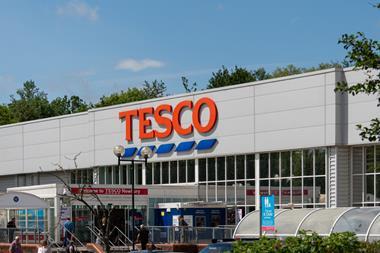

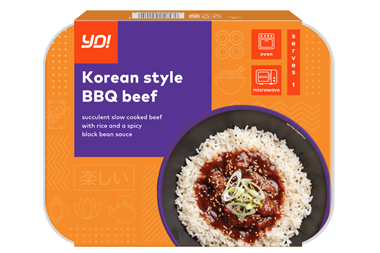
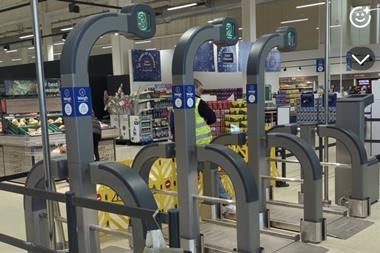


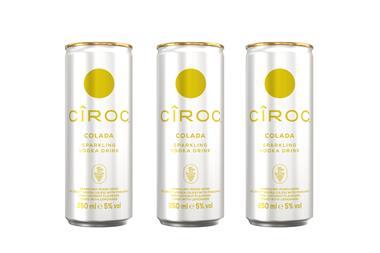
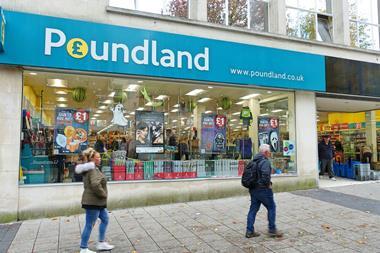



1 Readers' comment